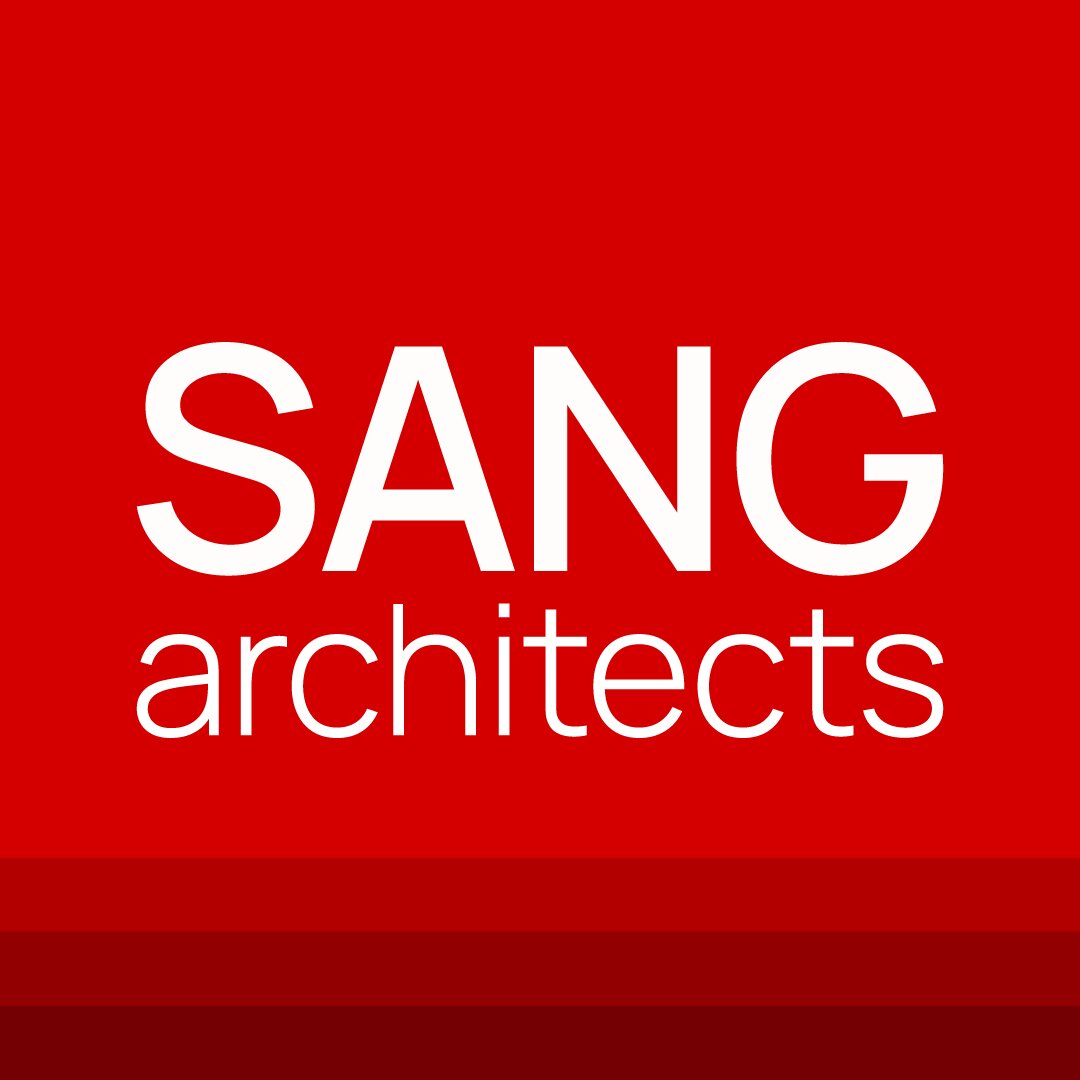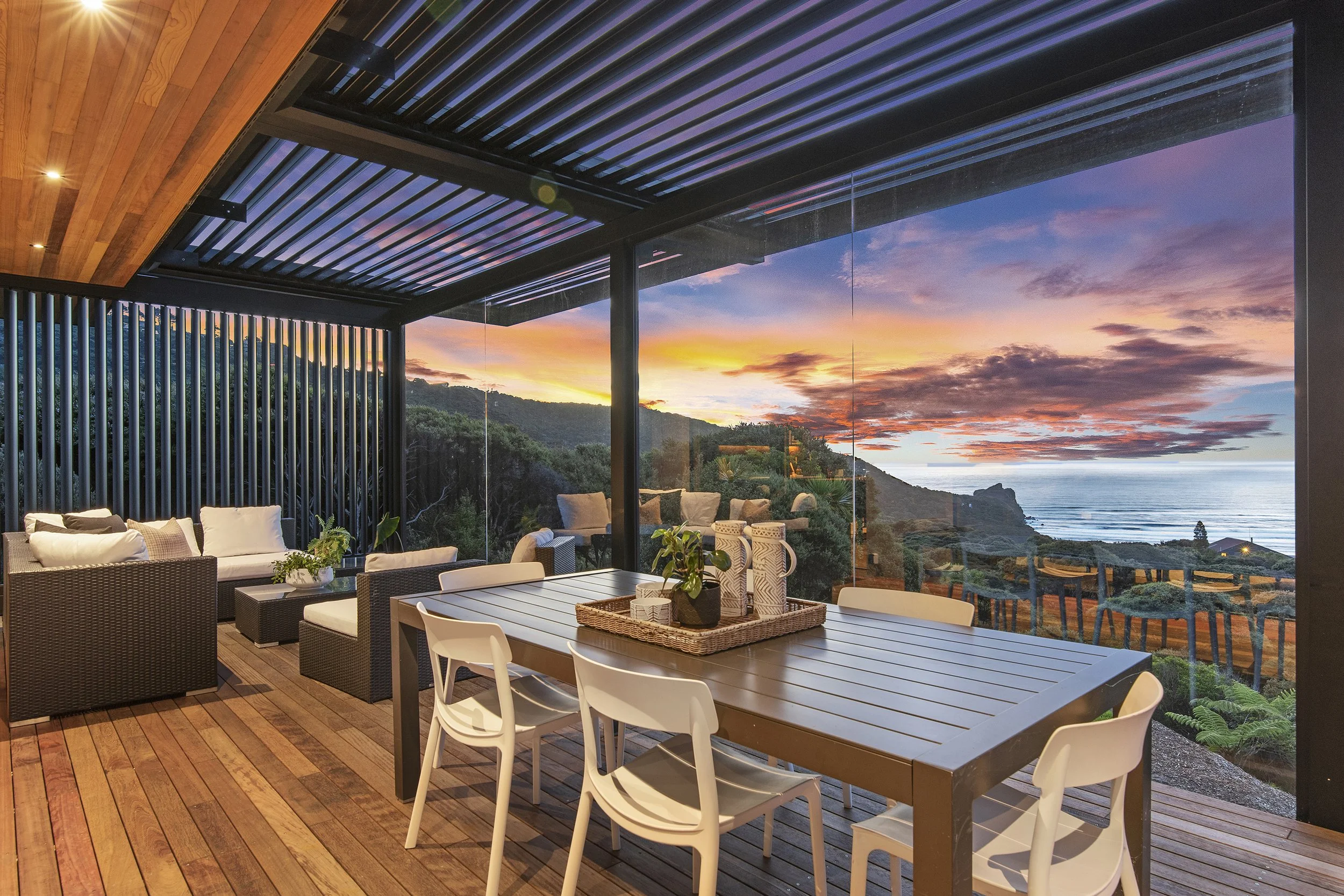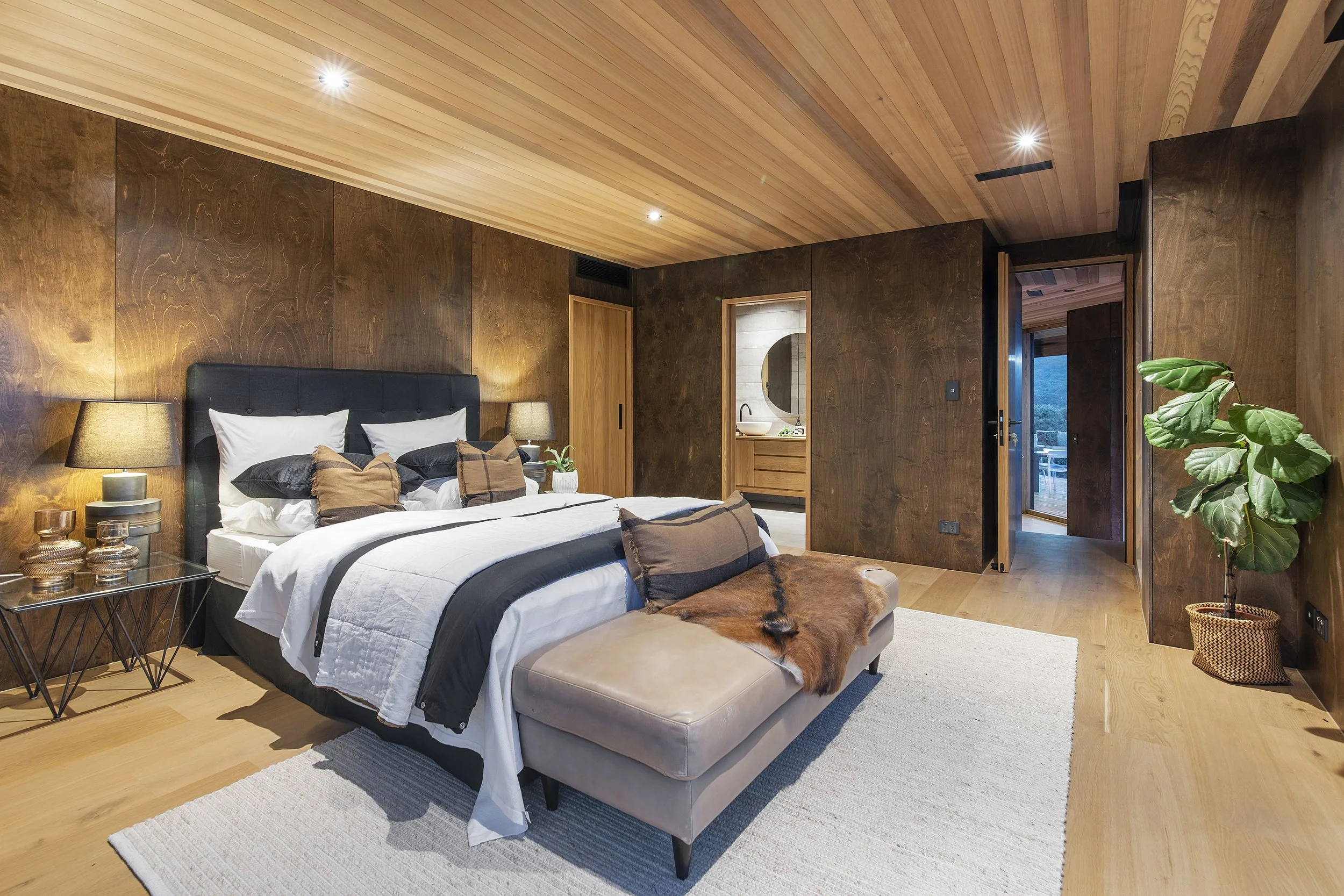Piha House EnerPHit
Piha Auckland New Zealand
Principal Architect - Darryl Sang
Team - Janice Au
Passive House Certification - EnerPhit
Passive House Designer - Sustainable Engineering Ltd
Passive House Certifier - Passive House Institute Darmstadt
Award - Regional Supreme Renovation of the Year, Registered Master Builders 2022
Award - National APL Sustainable & Environmental Excellence Award, Registered Master Builders, House of the Year 2022
Read Award article here
Read the Stuff article here
EnerPhit has been developed for refurbishments of existing buildings as it is not always possible to achieve the full Passive House standard. EnerPhit is the Quality Approved Energy Retrofit with Passive House Components Certificate.
Background
Located on the outskirts of Auckland City, the house is a mid-2000s 2-storey 4-bedroom 345-sqm home on an elevated site on Auckland’s West Coast, facing west with expansive views of Piha and Lion Rock. There are 2 wings connected by the entry foyer and staircase. There are 3-bedrooms in the quiet wing where guests have their own area below the master bedroom suite. The living wing has an open-plan kitchen, lounge and dining area above the large double garage.
The renovation adds another guest bedroom suite and an enclosed terrace which will give shelter from the prevailing wind. The renovation allows the bush and sea views to take precedence.
The existing construction is plastered concrete blockwork walls on a concrete slab with a suspended concrete mid-floor (including mid-level concrete terraces), aluminium single-glazed window joinery and a membrane roof. Being on an exposed, west facing site the house over heated in the summer and was too cold and draughty in the winter. The renovation will be within the existing building footprint
The initial brief was for a limited renovation to upgrade the single-glazed aluminium window joinery, kitchen and bathrooms, add an extra guest bedroom and add some extra internal insulation.
The existing house had minimal insulation resulting in internal mould growth. When the internal linings were removed mould was discovered throughout the structure, particularly in the cold membrane roof cavity and on the inside faces of external blockwork walls.
The owner had a particular health sensitivity to mould, so it was decided to undertake a full renovation aiming for Certified Passive House EnerPHit standard to stop this recurring. The existing visible mould was treated and removed and all internal surfaces were sealed to inhibit the spread of any mould spores.
How
Passive House focusses on five components to deliver a healthy home without condensation and mould. They are: Passive House windows, ventilation, no thermal bridging, airtightness and insulation.
The building envelope was upgraded with an external insulated plaster system on blockwork, a warm membrane roof and high performance Passive House certified timber-aluminium joinery with high performance double-glazed low-E low G-value (high shading coefficient) glass. High performance double glazed joinery was chosen with an interior insulating timber frame and an aluminium exterior face for weather protection and to reduce maintenance.
The double glazed joinery, wall, roof, and floor components have a high level of airtightness.
The Blower Door Test measured airtightness of 1.0 air change per hour, which meets the EnerPHit requirements. A conventional building code house is approx. 5.0 air changes per hour.
Ventilation is controlled through the use of a mechanical heat recovery ventilation system. This ensures excellent indoor air quality and control the internal temperature, humidity and comfort level of the occupants.
Particular attention was paid to remedying or reducing the effect of the thermal bridges in the existing structure including concrete terraces over internal habitable spaces, the concrete floor slab and cantilevered steel and timber roof structure. A thermal bridge is like a heat super highway that creates an easy path for energy to escape from the warm interior to colder exterior.
Other sustainable building features include:
Rainwater harvesting and borehole water supply
Both solar hot water and solar photovoltaics with battery storage and electric car charging
Mechanical heat recovery and ventilation (MHRV) system with integrated dehumidification
Heat pump split-system for active cooling
Heat pump domestic hot-water system with hospital grade stainless steel potable water system pipework
Overhead operable louvre roof to provide extra shading to the exposed living areas
Passive House suitable fireplace for night time ambiance - not required for heating.
30 October 2020
A technical talk by Darryl Sang about the renovation process and the issues that were encountered.
Builders - Bruyere
Structural Engineers - RC Engineers
Joinery - Seda Windows
MHRV - Edge Innovation
Cladding - StoTherm+



















